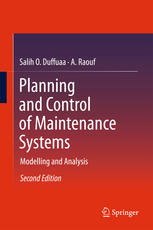

Most ebook files are in PDF format, so you can easily read them using various software such as Foxit Reader or directly on the Google Chrome browser.
Some ebook files are released by publishers in other formats such as .awz, .mobi, .epub, .fb2, etc. You may need to install specific software to read these formats on mobile/PC, such as Calibre.
Please read the tutorial at this link: https://ebookbell.com/faq
We offer FREE conversion to the popular formats you request; however, this may take some time. Therefore, right after payment, please email us, and we will try to provide the service as quickly as possible.
For some exceptional file formats or broken links (if any), please refrain from opening any disputes. Instead, email us first, and we will try to assist within a maximum of 6 hours.
EbookBell Team

4.8
104 reviewsAnalyzing maintenance as an integrated system with objectives, strategies and processes that need to be planned, designed, engineered, and controlled using statistical and optimization techniques, the theme of this book is the strategic holistic system approach for maintenance. This approach enables maintenance decision makers to view maintenance as a provider of a competitive edge not a necessary evil.
Encompassing maintenance systems; maintenance strategic and capacity planning, planned and preventive maintenance, work measurements and standards, material (spares) control, maintenance operations and control, planning and scheduling, maintenance quality, training, and others, this book gives readers an understanding of the relevant methodology and how to apply it to real-world problems in industry.
Each chapter includes a number exercises and is suitable as a textbook or a reference for a professionals and practitioners whilst being of interest to industrial engineering, mechanical engineering, electrical engineering, and industrial management students. It can also be used as a textbook for short courses on maintenance in industry.
This text is the second edition of the book, which has four new chapters added and three chapters are revised substantially to reflect development in maintenance since the publication of the first edition. The new chapters cover reliability centered maintenance, total productive maintenance, e-maintenance and maintenance performance, productivity and continuous improvement.